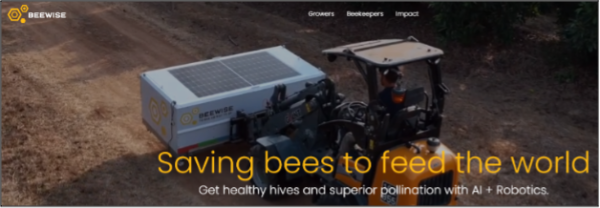Welcome to the 4th Agricultural Revolution!
Contents
THE OTHER AGRICULTURAL REVOLUTIONS. 3
The First Revolution (The Neolithic Revolution) 4
The Third Revolution (The “Green Revolution”) 5
The Fourth Revolution (“Agriculture 4.0) 6
FACTORS INVOLVED IN ALMOND POLLINATION. 8
Demand from the Almond Industry. 8
Climate Change and The Sustainable Ground Water ACT. 9
Progress in Almond Breeding. 10
BEEKEEPERS AND THE 4TH AGRICULTURAL REVOLUTION. 11
Public Perception, Sensationalism, and Targeted Advertising. 11
Internet of Things (IoT) and Hive Monitoring. 12
High-Tech Fake Honey vs. High-Tech Testing. 13
Welcome to the 4th Agricultural Revolution!
Randy Oliver
ScientificBeekeeping.com
First Published in ABJ February 2024
The 4th Agricultural Revolution (aka “Agriculture 4.0) involves the application of smart technologies such as artificial intelligence, biotechnology, the internet of things, big data, and robotics to improve efficiency and productivity. As with previous ag revolutions, it will likely disrupt the established order, including that between beekeepers and commercial agriculture (and perhaps even for bee-keeping itself).
I wrote this article in December, so that it could be published as we get the answer to the $64,000 question — is the bee supply going to be short or long for almond pollination this season? From late November through the end of January, migratory beekeepers talk and debate about the expected demand for, and supply of, bees for almond pollination. We share observations and opinions and make guesses and financial gambles. But every year we don’t find out what the actual situation is until early February, when the rubber hits the road.
But the road may be changing. In the December issue of this journal [[1]], my friend Charlie Linder wrote an excellent piece about two companies whose business plans have the potential to disrupt our industry. This may be the first indicator of how The 4th Agricultural Revolution may affect the beekeeping industry (Figure 1).
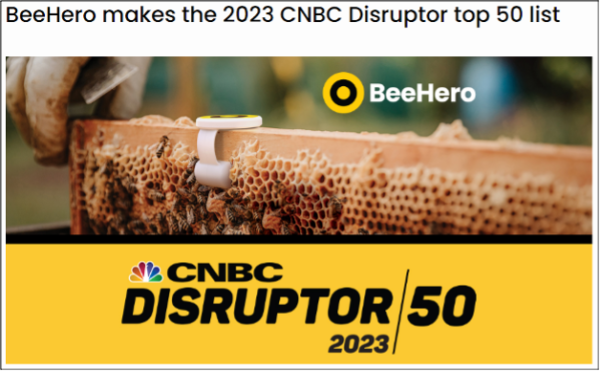
Fig. 1 BeeHero is unabashedly proud of the disruption they are causing [[2]]. They have applied “The Internet of Things” to hive inspections and grading for colony strength. Flush with cash from venture capitalists, they’ve released two Hollywood-quality sales videos — one for the growers, the other for beekeepers (each video claims that the target audience would make more money; how that works in a zero-sum game is beyond me).
Practical note: Our beekeeping industry, although largely dependent upon almond pollination, has done a dismal job as far as engaging with the almond growers and educating them about pollination biology and honey bee performance (other than not using certain pesticides and trying to spray at night). The growers are thus ripe for a good sales pitch, especially if they think that they can get more for less.
Their strategy worked, and BeeHero has suddenly become the largest pollination provider in the world. Not to be outdone, another startup, also with a pile of venture capital behind it, has a different idea for the future of pollination services (Figure 2).
Fig. 2 Instead of beekeepers hauling in truckloads of individual hives, Beewise instead want beekeepers to place their leased containers holding ten hives, robotically managed by Artificial Intelligence. Some beekeepers are understandably skeptical, but again, this company’s got a lot of venture capital behind it to spend on development and advertising.
Both companies are looking to capture a share of the current $400 million almond pollination market (targeting the roughly 10% paid for brokerage and grading services). Agricultural industries are understandably averse to disruption, but like it or not, in the words of Greek philosopher Heraclitus, “The only constant is change itself.”
Practical application: I’m not picking on these two companies (the founders are very likeable), but they are a harbinger of things to come.
I suspect that most hobbyists and sideliners will continue to enjoy “old school” beekeeping practices, but as far as our commercial industry is concerned, it appears that “the times they are a-changin’.” Due to a number of technological breakthroughs, there is a new Agricultural Revolution starting to take place.
THE OTHER AGRICULTURAL REVOLUTIONS
The First Revolution (the Neolithic Revolution)
Around 12,000 years ago, the invention of farming (as opposed to hunting and gathering) marked a transition from a nomadic lifestyle to fixed settlements, due to the need to attend cultivated fields [[3]]. Settlements and a steady food supply also allowed for the development of merchants, craftspersons, and scientists. Farmers weren’t dumb, and quickly learned how to improve their soils, irrigate, and selectively breed wild plants for traits better to their liking (Figure 3).

Fig. 3 I (along with Jeff Pettis) recently had the good fortune to visit the Sacred Valley of the Incas in Peru, and see the agricultural plant breeding site of Moray (elevation 11,500 ft). Built by the Incas in the 1400s, each precisely-crafted stone terrace (filled with transported soils), duplicated a different microclimate of the Inca Empire, and allowed for the development of thousands of varieties of potatoes, corn, and other crops. Each terrace was individually irrigated by underground culverts.
After seeing the incredible knowledge, ingenuity, and craftmanship of the Incas, it was obvious to us that although technology can advance, humans certainly aren’t getting any smarter!
The Second Revolution
This revolution occurred in the Netherlands and Britain between the 17th and the 19th centuries when farming became a business (coinciding in later years with the Industrial Revolution) [[4]]. It consisted of the technological innovations of larger farm sizes and far greater labor productivity, the improved plow, high-yield crops and crop rotation, chemical fertilizers, and increased selective breeding.
Beekeeping had been an agricultural industry since ancient Mesopotamia and Egypt, but changed little until the “Beekeeping Revolution” of the 1850s and ‘60s, when Langstroth designed his hive, Moses Quinby invented the smoker and started “commercial” beekeeping, Johannes Mehring brought us comb foundation, and Franz Hruschka invented the centrifugal extractor. Other than using trucks (rather than horses) for transport, many of us nowadays are still happy with using only slightly-improved variations of 1850s technology!
I had the opportunity at the 100th anniversary of the National Honey Show in England to purchase several beekeeping books published between 1890 and 1910 — how little our beekeeping has changed since (beekeepers were just as smart, observant, and innovative back then)!
The Third Revolution (the “Green Revolution”)
This revolution began with the invention of tractors and trucks with internal combustion engines during 1910-1920, which meant that we could start using fossil fuels rather than humans and draft animals for labor. But it really caught wind in the 1940s, when an Iowa-born agronomist named Norman Borlaug (who later won the Nobel Prize for being “The Father of the Green Revolution”) began working with Mexican scientists and farmers to apply technology learned in California: using disease-resistant, high-yield crops, hybrid seeds, synthetic fertilizers, and a new generation of pesticides (notably DDT).
In 1973, President Nixon’s Secretary of Agriculture, Earl Butz, infamously told farmers to “get big or get out” and to “farm fencerow to fencerow.” And for the first time since record-keeping began, per capita farm income exceeded that of urban Americans.
And then, starting in 1996, genetically-engineered crops hit the market: Roundup Ready soybeans and corn, and then Bt corn became commercially available. The use of glyphosate herbicides exploded (Figure 4), changing the face of agricultural lands, to the detriment of pollinators (due to lack of “weedy” forage). This was followed by the introduction of the neonicotinoid insecticides, and seed-treated crops — a controversial mixed blessing, since they replaced aerial spraying of some other nasty products.
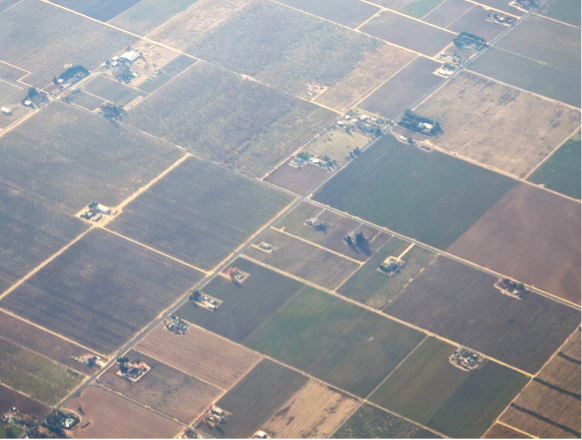
Fig. 4 I shot this photo of some small farms in California recently, impressed by how every plot border had weed-free bare soil — fencepost to fencepost farming, with very little non-crop forage.
The 3rd Agricultural Revolution allowed the human population to explode, but is dependent upon unsustainable synthetic and extracted fertilizers, cheap labor, overpumped water, and lots of pesticides.
The Fourth Revolution (“Agriculture 4.0)
We’re now at the beginning of the 4th Agricultural Revolution as electronic technology comes of age, and production agriculture incorporates the Internet of Things (IoT), Artificial Intelligence (AI), blockchain and biotechnologies, gene editing, robotic labor, precision dispensing of agrochemicals, vertical farming, and solar energy (and who knows what else). Agriculture 4.0 is “exciting — as well as a bit scary … but then the two often go together” [[5]].
So let’s set the scene for how this revolution may affect our industry:
The Almond Industry
Back in February 2005 — due to miticide-resistant varroa, the invasive wave of Nosema (Varimorpha) ceranae, and other virus and disease issues -— for the first time, beekeepers were unable to supply nearly enough bees for almond pollination in California. Growers responded by tripling the offered price for hive rental, and the next year grudgingly paid even more, at which point I wrote to the editors of both beekeeping trade journals, pointing out that our industry had passed a watershed moment — for the first time, the income received by beekeepers for pollinating almonds surpassed the income from total honey sales by our entire industry. We were now as much a pollination industry as we were honey producers, and most commercial beekeepers have been riding on the coattails of the almond growers ever since (incomes from almond pollination vs. honey have been running neck and neck).
Practical application: We’re awfully dependent upon the pollination needs of a single crop!
The Honey Industry
In the November issue of this journal [[6]] Ron Phipps had a great article about the negative impact on honey prices due to having to compete against “fake” and “adulterated” honey produced and exported from China and a few other countries. Chris Hiatt, as President of the American Honey Producers association, spoke at Apimondia about honey food fraud and how devastating the economically motivated adulteration of honey is to small family-owned enterprises throughout the world (not to mention our large commercial honey producers).
Practical application: Hauling hives to pollinate almonds is a costly pain in the rear. And even today’s high rental rates do not cover operating costs for the season, so the beekeeper still needs additional sources of income — honey generally being the main one. But cheap imported fake honey used by the food industry lowers the bottom line for all honey prices, and threatens the viability of our legitimate domestic honey producers.
Miticide Resistance
When varroa arrived, lacking resistant bee stock, we jumped straight to synthetic miticides as a stopgap measure (Figure 5).
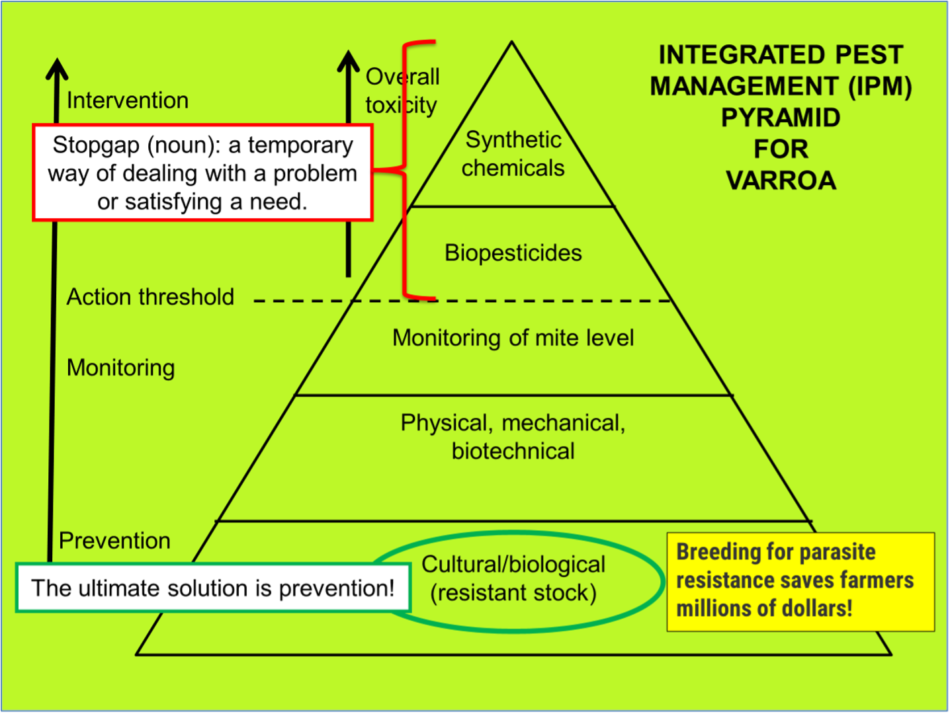
Fig. 5 This is a Powerpoint slide that I created to illustrate the IPM pyramid for varroa. Control of varroa with any synthetic miticide is only a stopgap measure — we’ve watched fluvalinate and coumaphos fail. Amitraz has held the mite at bay for a long time, but the writing’s on the wall.
Our commercial beekeepers, by not rotating treatments with different modes of action, have been remarkably successful at selectively breeding for resistant mites. Indeed, some beekeepers are now making 15-20 applications of amitraz a year. Without taxpayer-funded ELAP payments, many commercial operators would be hurting.
Practical application: Due to the lack of any new “silver bullets,” many commercial beekeepers are finally having to learn to use organic acids and thymol. But the real revolution will take place when our commercial queen producers are finally able to supply proven mite-resistant stock (that may not be long!).
In summary, our current scene is that our beekeeping industry is half dependent upon high rental rates for almond pollination, is being hurt by low honey prices due to competition from fake honey, and is dealing with the need to shift from amitraz. The Fourth Agricultural Revolution will involve all three, especially with regard to almonds, so let’s start with that first.
FACTORS INVOLVED IN ALMOND POLLINATION
Demand from the Almond Industry
The almond industry has been on a joyride for nearly twenty years, and we beekeepers have been along for the ride. But as with any other crop, if it’s profitable, it will eventually get overplanted, and supply will exceed demand. That’s the situation now for the almond growers — there’s a glut of almonds on the market, so the price has dropped (Figure 6). At the same time, fertilizer and all other operating costs are skyrocketing.
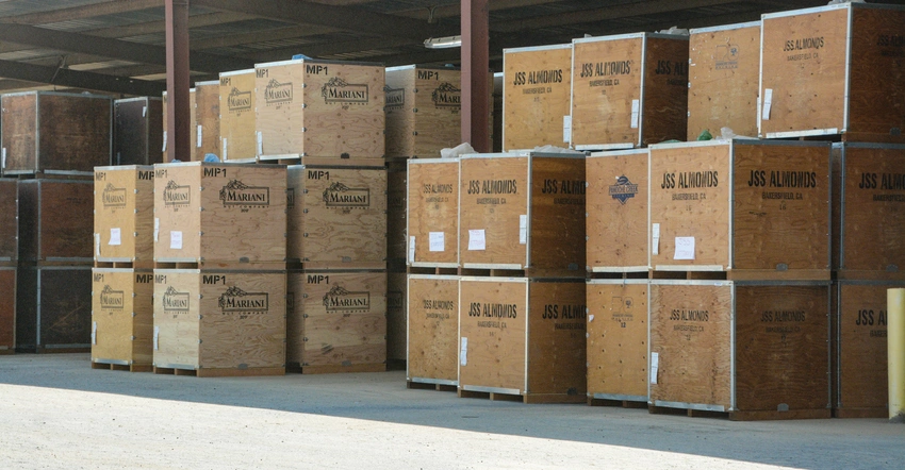
Fig. 6 A glut of nuts! Is the joyride over? Photo credit Todd Fitchette, Farm Progress.
Practical application: Growers are feeling the pinch, and are putting pressure on beekeepers to drop their prices (it’s kind of a game of chicken) or to cut back on the stocking rate.
Climate Change and the Sustainable Ground Water Act
The California Central Valley has long been the premier spot to grow almond trees, and we supply over 80% of the world’s demand for this tasty and nutritious nut. But our current farming methods are unsustainable, especially with regard to the water supply.
For quite a few years now, it’s been a race to the bottom, as farmers competed to see who could drill the deepest well to pump precious water out of the ground, resulting in the subsidence of the soil level throughout the San Joaquin Valley (Figure 7).
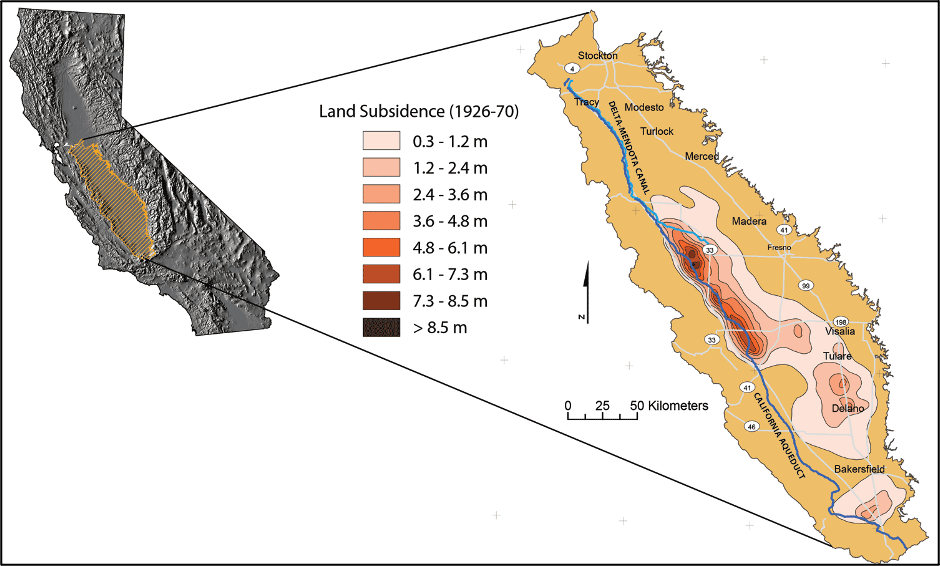
Fig. 7 Almonds are grown throughout the California Central Valley. The Sacramento Valley is to the north, but the majority of orchards are in the southern San Joaquin Valley (shown). Land subsidence due to overpumping there has been stunning. This chart shows the number of meters of subsidence between 1926 and 1970 [[7]](one dark area had dropped a total of 30 feet)! The rate has slowed a bit, but increases in dry years when there is less surface water available.
As a result, California is instituting the Sustainable Groundwater Management Act (SGMA). That, drought, and climate change are forcing some growers to abandon their orchards, or convert the land for other crops or uses (such as pistachios, agave, or solar panels).
Practical application: There may be a decrease in demand for hives, at least for the next few years.
And there’s an additional potential disruptor on the near horizon:
Progress in Almond Breeding
Almond pollination is all about the sex act — the transfer of pollen grains from the male anthers to the female pistils, normally between two self-incompatible cultivars. But what grower wants to pay big money for a beekeeper to haul in pollinators? So plant breeders have worked to develop self-fertile almond cultivars, such as Independence (which now accounts for about 8% of bearing acreage [[8]].
Luckily for those of us in the pollination biz, even Independence benefits from bees (although stocked at only half the normal number of hives per acre). But there’s a new nut in the neighborhood — Yorizane is a self-pollinating almond variety developed by USDA’s Agricultural Research Service, with superb consumer traits such as size, color, and flavor [[9]]. Yorizane has been in field trials since 2014, and due to its flower structure, may not need bees at all [[10]].
Practical application: Yorizane may well displace the current favored cultivar, Nonpareil. If so, we migratory beekeepers (not to mention BeeHero and Beewise) could lose an important source of income. Unless we figure out how to deal with honey fraud, we could be in serious trouble.
BEEKEEPERS AND THE 4TH AGRICULTURAL REVOLUTION
The Internet
The internet has been a mixed blessing for beekeepers. We now not only have the world’s libraries at our fingertips, but are suffering from information overload — much of it erroneous, biased, sensationalized for marketing purposes, or just junk. Back in the day, published information was generally filtered through editors, who reviewed, checked, and corrected it. As I previously mentioned, there were of plenty of well-written and informative beekeeping books and journals by 1900. “The British Beekeepers’ Guide Book” had by 1904 already sold 50,000 copies (one for every thousand Britons), and was releasing a second edition (this on top of a large number of other excellent beekeeping books available for a beekeeper to read at their leisure).
Compare this to beekeepers today getting much of their information from the screen of a cell phone. The most common thing that I hear from beekeepers today is that “I saw on the internet that…” (Figure 8).

Fig. 8 I got over five million results for a search for basic information on beekeeping! And yet we keep hearing of colony loss rates being unacceptably high. Too much information may be worse than too little. Despite so much information being available, I’m still acutely aware of the degree of my ignorance of bee biology, and continually hit dead ends when seeking answers to important questions.
Public Perception, Sensationalism, and Targeted Advertising
Any time you look at a computer or cell phone screen, a billboard, TV, newspaper, or magazine, you are continually being brainwashed by advertising designed to grab your attention. The honey bee has been hijacked as a poster child by any group wanting to raise money or sell a product. Although this has created a huge hobby demand for those who want to help “save the bees,” we beekeepers must continually be aware of, and counteract, any negative perceptions about our industry or our products (notably honey). Always remember the lesson of the Alar Scare — when sensationalized fearmongering “news” temporarily devasted the apple industry [[11]]. Media outlets vie for the catchiest headlines (Figure 9).


Fig. 9 The above headline in The Guardian [[12]] and Men’s Journal [[13]] got the attention of consumers, especially those in Europe. Such perceptions can reduce the demand for almonds, which could indirectly hurt those of us who get paid for pollination.
Enter the Technogeeks
For some reason, many innovators wind up sitting with me on my deck, asking my opinion of their whiz-bang invention, having questions on how they might improve and market it, and sometimes asking me to advise or collaborate. A number of them are technogeeks showing up with what I call “a solution looking for a problem.” These are mainly hive monitoring devices and systems that in the past would have only been of interest to a subset of researchers, but now are available to any beekeeper wanting to find out anything about their hives by looking at their computer screen.
Internet of Things (IoT) and Hive Monitoring
Beekeeping is labor intensive, and like other livestock husbandry, making a profit is very much dependent upon how well the beekeeper understands and monitors the health of their colonies, while minimizing their amount of labor. The Internet of Things refers to a network of physical devices, vehicles, appliances, and other physical objects that are embedded with sensors, software and network connectivity that allows them to collect and share data. Remote monitoring of colonies may free a beekeeper from the need to physically open a hive to “inspect” it.
Practical application: For those beekeepers handy with a computer or cell phone, a world of techno-monitoring equipment is available — there are now plenty of devices available to track temperature and humidity, weight gain or loss, bee flight, swarm preparation, mite levels or hive theft, or to organize recordkeeping (Figure 10).
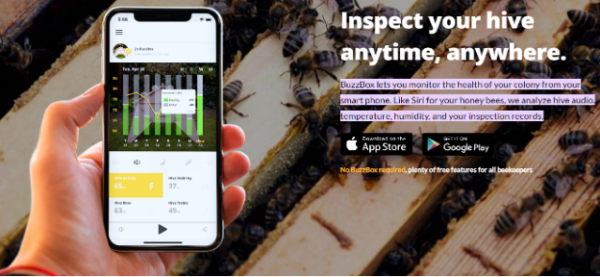
Fig. 10 There are now any number of apps available for hive monitoring and recordkeeping. Advice: if you’re on a date, don’t let her catch you paying more attention to a hive than to her!
Call me “old school,” but understand I began keeping bees prior to the invention of cell phones and computers, and love working outdoors and getting dirty. Nothing is more thrilling to me than the energy emanating from a hive in springtime, reveling in an abundant nectar and pollen flow. And the joy of seeing a queen that I reared on a perfect frame of brood. Although many of us love the magic and lifestyle of beekeeping, and the soul-smoothing vibe that we experience each time we open a hive, a beekeeper now has the option of monitoring their hives from a computer screen in their office. Hobby and sideline beekeepers will of course continue our connection with Nature, but the commercial industry is now grappling with adapting to new technologies.
Practical application: These devices give curious beekeepers a chance to gain insight into what’s happening in their hives, but commercial guys may mainly be more interested in a simple system that alerts them each morning to any needed action items in their outyards (which can largely be determined by simple weight monitoring).
Advances in Technology
Plastics in Beekeeping
It was difficult for me to switch to plastic foundation, but I’ve held the line there — I’m personally hesitant to use plastics that I can’t recycle. So how about polystyrene hives? They have certain advantages (bears like them), but my question is, what are you going to do with them when they wear out? They are not currently economical to recycle, are seriously polluting if burned, and can create an environmental mess as they degrade. We’re going to need to come to terms with non-burnable bee equipment.
High-Tech Fake Honey vs. High-Tech Testing
Fraudsters have figured out how to produce fake or adulterated “honey” from cheaper ingredients, such as sugar syrups made from cane, corn, rice, or beets, or from unripe harvested nectar, filtered through advanced resin technology, and spiked with ingredients to pass traditional methods of testing for purity. So it’s now a technological race between the fraudsters and the testers (Figure 11).
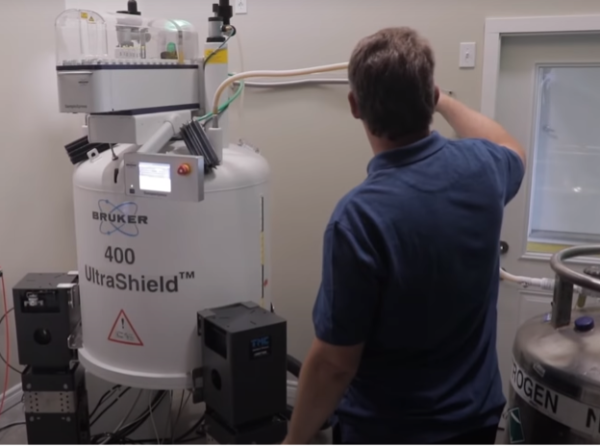
Fig. 11 Dr. Peter Awram of True Honey Buzz [[14]] using nuclear magnetic resonance technology to identify honey to its source
Agriculture 4.0 has also brought about the dawn of synthetic or cultured (vs. naturally-grown) foods, such as plant-based meat alternatives, vegan cheese, lab-grown meat, and synthetic “honey” (Figure 12).
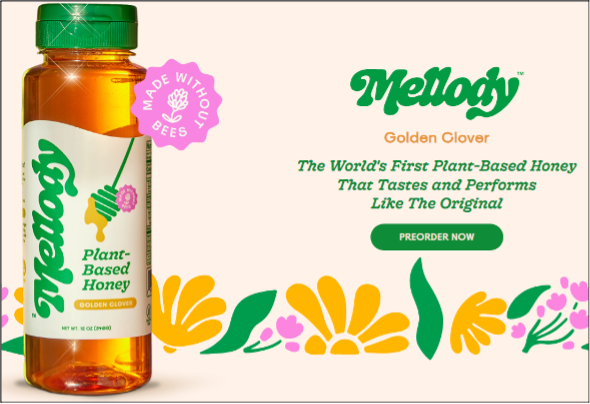
Fig.12 MeliBio [[15]] is a startup that has taken synthetic honey to a new level, by selling it with the pitch that “the commercial production of honey is destroying the biodiversity of our planet and wiping out our native bee populations. … By choosing MeliBio’s honey without bees, you’re joining us in our mission to create a kinder, more sustainable future for humans and bees alike.”
Not to be outdone, Israeli startup Bee-io is on their tail (Figure 13).
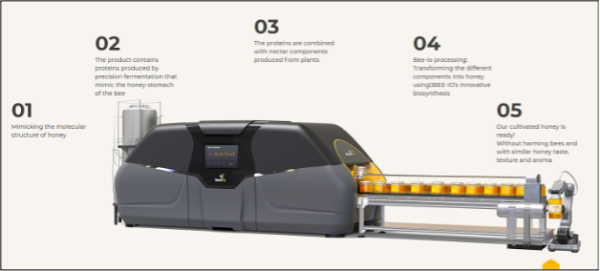
Fig. 13 Bee-io [[16]] promotes their product by claiming that “cultivated honey is pure, baby-safe, and 100% bee-free” and “lacking the bad materials that are very common in natural honey.” And they go on:
“Bee-io aims to eliminate human nutrition dependency on bees. The existing method of honey production endangers bees and results in escalating prices … the honey produced [by bees] may contain toxins, pesticides, and antibiotics.”
Warning! These companies are potential disruptors in three ways:
- They are hijacking the name “honey” for a product that is not honey.
- The main reason that people pay more for honey than they do for sugar is their perception that honey is a more natural and “healthier” sweetener, and that they are helping the bees. The marketing strategies of these companies are to badmouth natural honey, honey bees, and beekeepers (read Melibio’s damning report at [[17]]). This sort of disparaging advertising gives us and our product a black eye.
- And if these legit companies can make fake honey indistinguishable from the real thing, the black-market fraudsters will not be far behind!
Practical application: I’m not clear on how making fake honey from sugars extracted from agricultural crops can be more eco-friendly than honey made from nectar harvested from wildflowers, but it is clear that the marketing strategy of these companies (awash in cash for advertising) will be to disparage our natural product. Our industry should create a task force to address this issue!
New Inventions and Products
The Israeli Startups
Israel has been nicknamed the “startup capital of the world,” since it has the most start-ups per capita. Seeking a larger market, many Israeli ag-related startups come to California, so I’m not surprised that several have shown up at my place. When the innovators ask me who their potential market might be, I explain the differences between the hobby vs. the commercial markets, and the fact that most beekeepers don’t do it for the money, but rather because they love keeping bees, being outdoors in nature, and the challenging lifestyle involved.
So I’ve twice suggested that a startup might have better luck pitching their product to the big fruit and nut growers (I now kinda regret making that suggestion).
Practical application: I’ve previously worked with two startups funded by venture capital. Those investors gamble big money, hoping for an eventual large return on their investment. So this puts huge pressure on the startup to start showing success, so I’m not surprised that these startups are coming on strong.
The Brokering of Pollination Services
BeeHero developed an IoT monitoring device that they claim can tell you all kinds of things about your colonies, notably how strong they are (they have recently invited me to confirm their claim in the orchards). At first they tried selling their system to beekeepers, but then shifted to instead targeting the growers paying for pollination services, with the motto “Get Premium Bees & Pollinate Your Crops With Precision.”
I’ve pollinated almonds for over 40 years. My favorite contracts are those in which 10% of our hives are randomly graded for strength by the broker, and we get paid accordingly — a practice that I strongly support, since not only does the grower get what they’ve paid for, but we get rewarded for having strong colonies [[18]].
BeeHero claims to be able to do exactly that (but grading every single hive): “BeeHero’s mission is to deliver pollination accountability for commercial crop growers, by leveraging big data analytics and machine learning to help them mitigate pollination risk.”
Practical application: Those of us who have enjoyed fat checks for almond since CCD, are starting to see disruption of our relationships with “our” growers and established brokers. Again, I’m not saying this is good or bad, but not every beekeeper or broker is happy with a newcomer muscling in, nor wanting to sign a contract with a company that requires them to place an electronic monitor in every one of their hives. It’s gonna be “interesting” to see how this all works out!
Mechanical Pollination
Similar to those hawking the “honey alternatives” who are telling us to eliminate bees from the picture, companies involved with robotics are trying to do the same thing with regard to the honey bees’ other nasty habit — that of pollinating flowers (Figures 14-16).

Fig. 14 Israeli startup Edete Precision Technologies for Agriculture’s proprietary 2BeTM autonomous pollinator. The company is running trials in California almonds [[19]].
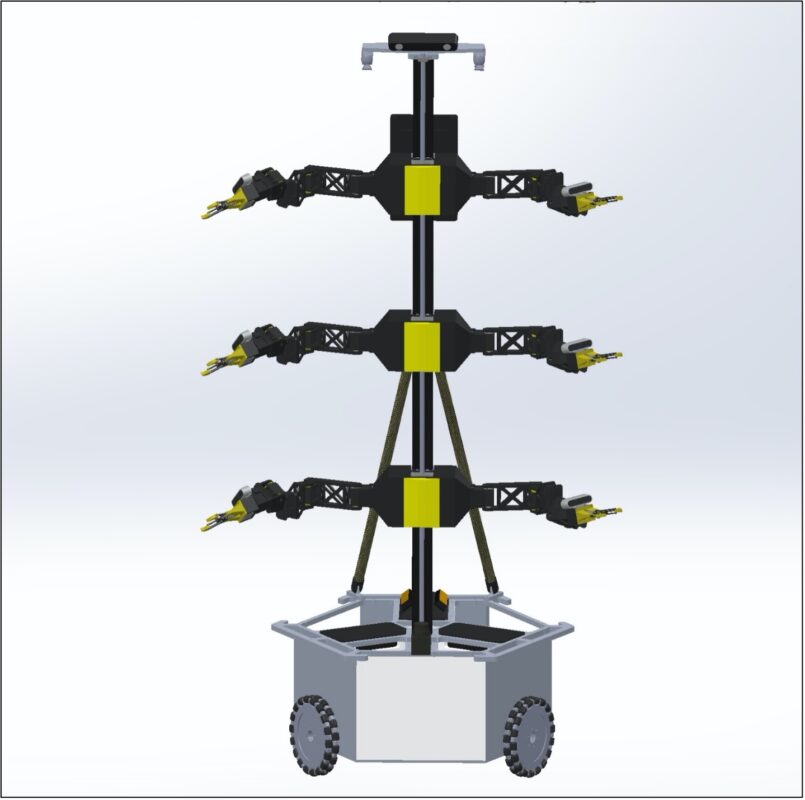
Fig. 15 The StickBug from West Virginia University, which could be used for greenhouse and vertical farm pollination
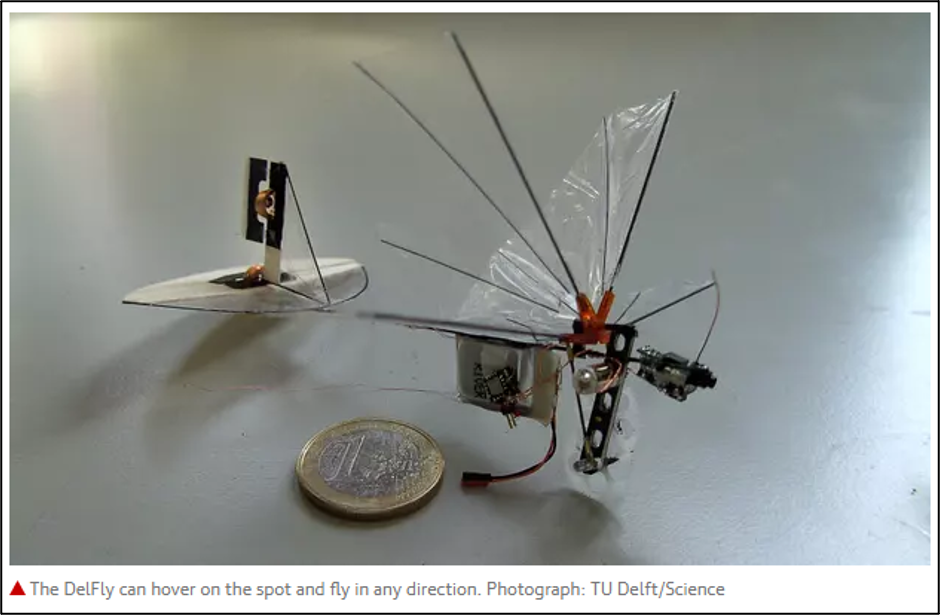
Fig 16 And then there are startups and universities developing miniature drones to perform robotic pollination (but not insemination). “Dutch scientists say they can create swarms of bee-like drones to take over if the insects die out.” Image from [[20]].
Practical application: I can see a potential market for mechanical pollination in greenhouses, but can’t imagine the logistics of the maintenance and battery charging involved with a swarm of robotic drones. When I’ve monitored colony flight in almonds on cool or rainy days, foragers may only fly for less than an hour. The huge advantage to the grower is that honey bees don’t need to be programmed, or stored for nine months of the year — they are eager to pollinate blossoms the moment that the temperature is high enough for the pistils to be receptive.
Robotics
California farmers and commercial beekeepers have long depended upon cheap labor from skilled and hard-working employees from Mexico and elsewhere, who were willing to perform the physically-demanding, hot, and dirty work that spoiled Americans were unwilling to do. But this labor pool is contracting, and technologists involved in robotics are seeing market opportunities for a 4th Agricultural Revolution. This also applies to beekeeping.
The Israeli company Beewise (mentioned at the beginning of this article) has invented the BeeHome — an enclosed container that holds hives of bees, and can manipulate every frame robotically, using AI to identify bees, brood, and honey, as well as disease. Their system is truly remarkable.
Their business plan is now to lease these containers to beekeepers, and provide pollination services to growers. Beekeepers then run their bees in BeeHomes, placing the containers in areas of forage (where the beekeeper can make honey) while not on pollination contracts. (I’m not clear on how involved a beekeeper will actually be with hands-on management of their colonies, nor the specifics of their contract.)
Practical application: Many of us are riding on the coattails of the almond growers, who may eventually not even need us. In the interim, expect some disruption as Beewise competes with BeeHero to take over pollination services, although I suspect that there will still be a place for independent beekeepers and old-school established brokers for a while.
Artificial intelligence (AI)
I left this hot topic ‘til last. From an IBM webpage: “Artificial intelligence leverages computers and machines to mimic the problem-solving and decision-making capabilities of the human mind.”
Artificial intelligence (AI) has unlimited (and scary) potential. It’s a huge unknown that could completely revolutionize agriculture, and either finally separate humans from nature, or allow us to enjoy “virtual” nature, or perhaps somehow “reduce” the size of the human population to come into balance with Earth’s ecosystems in a sustainable manner.
Large-scale commercial agriculture will likely be the first to embrace Agriculture 4.0. A farm may be managed by AI, which could choose the most profitable crops to plant, instruct the GPS-coordinated self-driving tractors precisely where to plant and fertilize, and control the robotic weeders and harvesters to complete the job. Will commercial beekeeping take the same path?
On the other hand, lots of us enjoy living on the land, growing our own food, tending our bees, and living with nature. The only constant is change. The world has changed tremendously in my lifetime; it’s hard to imagine how it will look when my grandchildren are my age.
For what it’s worth, ChatGPT told me that “The Fourth Agricultural Revolution … poses challenges that will require continuous adaptation, collaboration, and innovative solutions within the beekeeping industry.”
Practical application: I’ll give AI the last word. I wondered whether Artificial Intelligence could solve the classic beekeeping problem: “Ask ten beekeepers a question, and you’ll get fifteen different answers.” So I of course ran an experiment. I asked ChatGPT the question “Should I insulate my beehive?” and got a very nice generic answer. I then asked the same question twice again, and received a completely different answer each time. Nope, AI didn’t solve the problem. But the last paragraph of one of the answers gave me hope (Figure 17).

Fig. 17 ChatGPT wrapped up its generic answer (not realizing that we all keep the same species) by sending us back to human beekeepers for advice. So you may as well go ahead and ask ten of them for their opinions!
Feedback
Beekeeper Derek Lewis pointed out that had we beekeepers not risen to the challenge of pollinating the huge crop monocultures, that the human population may not have grown to its current overload.
CITATIONS
[1] Linder, C (2023) BeeHero and Beewise. American Bee Journal 163(12): 1339-1342.
[2] Image from https://www.beehero.io/news/beehero-makes-the-2023-cnbc-disruptor-top-50-list
[3] https://intellidigest.com/food-production/agriculture-4-0-the-fourth-revolution/
[4] https://populationeducation.org/a-timeline-of-the-three-major-agricultural-revolutions-in-history/
[5] https://www.oliverwyman.com/content/dam/oliver-wyman/v2/publications/2021/apr/agriculture-4-0-the-future-of-farming-technology.pdf
[6] Phipps, R (2023) International Honey Market Report. American Bee Journal 163(11): 1169-1174.
[7] https://www.usgs.gov/media/images/land-subsidence-san-joaquin-valley-california-1926-70
[8] https://www.almonds.com/sites/default/files/2023-04/2022_NASS_Acreage.pdf
[9] https://www.ars.usda.gov/news-events/news/research-news/2021/researchers-develop-self-pollinating-almond-with-a-gold-mine-of-tasty-traits/
[10] https://journals.ashs.org/hortsci/downloadpdf/journals/hortsci/56/9/article-p1142.xml
[11] https://www.acsh.org/news/1999/02/01/an-unhappy-anniversary-the-alar-scare-ten-years-later
[12] https://www.theguardian.com/environment/2020/jan/07/honeybees-deaths-almonds-hives-aoe#maincontent
[13] https://www.mensjournal.com/food-drink/industrial-almond-farming-killing-bees
[14] https://truehoney.buzz/the-solution/
[17] https://uploads-ssl.webflow.com/64248b6809fb11548c023516/644ffe7d49a93c12d4d23fb7_The%20State%20of%20the%20Bees%20Report.pdf
[18] https://scientificbeekeeping.com/determining-the-relative-value-of-hives-for-almond-pollination/
[19] https://edetepta.com/post/precision-pollination-contributes-28-increase-of-almond-yield/
[20] https://www.fao.org/e-agriculture/news/robotic-bees-could-pollinate-plants-case-insect-apocalypse




